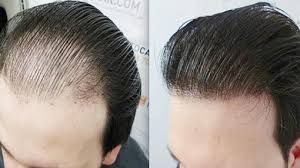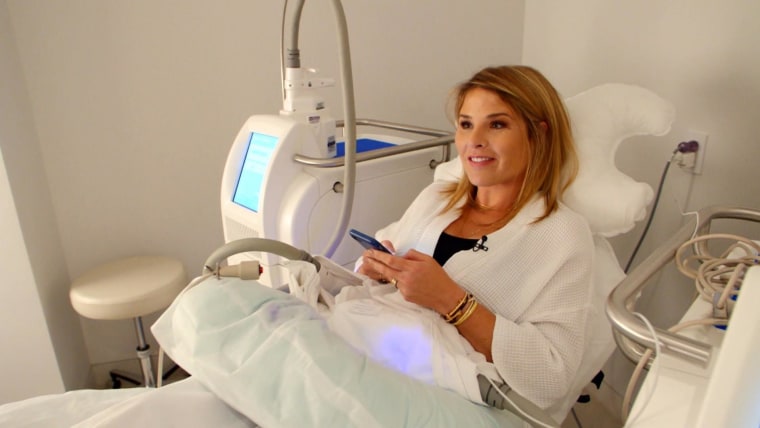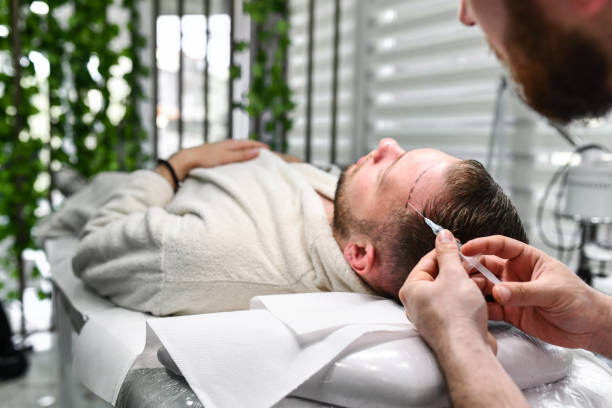Biomedical adhesives hold tissue, seal leaks, and anchor devices. Surgeons use them to close incisions, control bleeding, and protect delicate organs. Nurses apply them to keep dressings in place and reduce skin trauma.
Engineers rely on them to bond implants and microfluidic parts. Natural and synthetic chemistries now sit side by side on operating tables. Hospitals want faster procedures, fewer complications, and smaller scars. Payers want fewer readmissions.
Patients want comfort and speed. Adhesives meet all three goals when chosen and applied well. The market stands at a crossroads where materials science, regulation, and clinical workflow meet.
Full Details Report: Global Natural and Synthetic Biomedical Adhesives Market

Market Size and Share
The global market covers two broad families. Natural systems include fibrin, gelatin, collagen, and chitosan. Synthetic systems include cyanoacrylates, polyethylene glycol (PEG) hydrogels, polyurethane, and silicone-based sealants. Natural formulas hold strong appeal in hemostasis and soft-tissue sealing. Synthetic formulas dominate in skin closure, catheter securement, and device bonding. Hospital operating rooms drive the largest share. Ambulatory surgical centers grow fast due to outpatient workflows. Wound care and emergency medicine add steady demand. Cardiovascular, general surgery, plastics, orthopedics, and neurosurgery account for most clinical use. Skin closure and hemostasis lead unit volumes. Sealants and internal adhesives contribute higher average selling prices and margin.
Latest Trending Reports
Global Fluoroscopy – C Arms Market
Global Foliar Spray Market
Global Folic Acid in Food Market
Global Food Dispenser Market
Global Food Essence Market
Global Food Flavor Encapsulation Market
Global Food Grade Maltodextrin Market
Global Food Stabilizers Market
Global Food Starch Market
Global Food Texturants Market
Global Forceps and Spatulas Market
Global Fortified Juices Market
Global Fourier Transform Infrared (FTIR) Portable Spectrometer Market
Global Fracking Chemicals Market
Global Free Range Eggs Market
Global 3rd Generation Lentiviral Vector Market
Market Trends
Material innovation moves from “strong and sticky” toward “biofunctional and smart.” Degradation timelines now match tissue healing windows. Hydrogels swell predictably and resist wash-out. Light-activated systems provide precise curing in wet fields. Bio-based materials gain strength through crosslinkers and nanofillers. Infection control shapes design. Silver, iodine, and antimicrobial peptides appear in newer lines. Low-exotherm cyanoacrylates reduce thermal injury. Skin-friendly carriers limit dermatitis and medical-adhesive–related skin injury (MARSI). Human-factors design matters. Color change indicators show cure progress. Controlled-flow applicators improve placement. Micro-spray and brush tips reduce waste. Sustainability enters procurement checklists. Fewer solvents, lower VOCs, and recyclable packaging gain attention. Digital instructions, QR-linked training, and smart IFUs assist staff onboarding.
Market Growth
Multiple forces lift demand. Minimally invasive procedures keep growing. Smaller incisions need adhesives more than sutures and staples. Enhanced recovery pathways shorten hospital stays and require fast closure. Chronic disease adds procedure volume in cardiology, oncology, and metabolic surgery. Population aging raises case counts for hernia repair, joint replacement, and dermatologic oncology. Health systems focus on operating room efficiency. Adhesives save minutes and reduce suture line leaks. Lower complication rates protect value-based reimbursement. Innovation opens new indications. Dural sealants improve neurosurgical watertightness. Lung sealants reduce air leaks after resection. Vascular sealants secure anastomoses. Ophthalmic and ENT use cases expand steadily. Veterinary and dental settings add niche growth. Emerging markets invest in surgical infrastructure and trained staff. Local manufacturing and technology transfer reduce costs and improve supply resilience.
Market Demand
Clinicians seek predictable handling and clean fields. Adhesives must cure in the presence of blood, motion, and saline. They must work through endoscopes and small ports. Nurses want less skin stripping when changing dressings. Patients want fewer needle punctures and better cosmetic results. Procurement teams want standardization and shelf-life stability. Logistics teams want cold-chain simplicity. Risk managers want clear IFUs, strong post-market surveillance, and credible clinical data. Reimbursement teams want codes and coverage policies that match current practice. All groups want training that fits into busy schedules. Vendors who deliver strong education programs earn loyalty.
Market Share
Natural systems hold strong positions in hemostasis and soft-tissue sealing. Fibrin glues remain familiar and versatile. Collagen and gelatin products bring biocompatibility and enzymatic breakdown. Their brand trust is high in cardiac and liver procedures. Synthetic systems hold share in skin closure and device securement. Cyanoacrylates provide fast bonds and microbial barriers. PEG hydrogels offer elasticity and atraumatic removal. Polyurethanes deliver robust internal sealing. Combination kits that pair hemostats and sealants rise in value analysis committees. Portfolios that span natural and synthetic classes perform best in multi-hospital tenders.
Competitive Landscape
Global medtech leaders set the pace with broad portfolios, regulatory reach, and surgeon education. Mid-sized specialists target high-value niches like neurosurgery and thoracic surgery. Startups compete with novel chemistries, on-tissue curing, and bio-inspired adhesion motifs from mussels and barnacles. Contract manufacturers support white-label lines for regional distributors. Intellectual property focuses on crosslinking mechanisms, delivery devices, and antimicrobial strategies. Post-market registries and real-world data now shape tender outcomes as much as RCTs. Partnerships with robotic surgery platforms and endoscope OEMs strengthen channel access.
Regulatory and Quality
Adhesives face tight scrutiny on biocompatibility, cytotoxicity, sensitivity, and degradation products. Shelf-life validation, sterility assurance, and packaging integrity are central. Hemostats and sealants often carry higher-risk classifications than skin adhesives. Evidence must show hemostasis time, leak pressure, and reoperation rates. Human-factors engineering appears in submissions. Clear instructions for laparoscopic and open use reduce misuse risk. Unique Device Identification improves traceability. Vigilance programs and lot-level tracking support recall readiness. Vendors that exceed baseline standards win trust with hospital committees and insurers.
Technology and Material Outlook
Natural adhesives. Fibrin remains a workhorse with dual-syringe delivery and spray options. Collagen and gelatin scaffolds gain tunable porosity and strength. Chitosan brings inherent antimicrobial properties. Crosslinkers add mechanical stability without harsh chemistry.
Synthetic adhesives. Cyanoacrylates move to low-odor, low-bloom, and flexible chains. PEG hydrogels deliver moisture balance and gentle removal. Polyurethanes hit higher burst pressures for vascular and lung applications. Silicone-based lines support long-wear securement around ostomies and drains.
Smart features. On-demand curing via visible light or mild heat offers control. Colorimetric cues display polymerization progress. Drug-eluting variants release antibiotics or anti-inflammatory agents. Radiopaque markers improve imaging visibility. Bio-inspired catechols improve wet adhesion on dynamic tissues.
End-Use and Application Segments
Skin closure. Emergency medicine, dermatology, and pediatrics rely on fast closure and scar quality.
Hemostasis and sealing. Cardiothoracic, hepatic, and splenic surgery need rapid blood control and leak prevention.
Dural and lung sealing. Neurosurgery requires watertight closures. Thoracic surgery targets shorter chest tube duration and length of stay.
Device securement. Peripheral and central lines, dialysis catheters, and external devices need stable interfaces that protect skin.
Advanced wound care. Chronic ulcers and surgical incisions benefit from atraumatic dressing changes and infection control.
Dental, ophthalmic, and ENT. Smaller fields and moisture exposure reward precise, biocompatible systems.
Pricing and Access
Hospitals evaluate total cost, not list price alone. Saved OR minutes, fewer leaks, and lower readmissions matter. Kits that bundle applicators, tips, and dressings reduce waste. Long shelf life reduces write-offs. Room-temperature storage simplifies logistics. Tiered portfolios allow “good, better, best” alignment across departments. Value analysis committees ask for head-to-head data. Contracting favors vendors who support procedure training, in-service coverage, and data collection.
Risks and Barriers
Adhesion failure in wet fields remains a concern. Thick sealants can impede healing if overused. Exotherm and tissue toxicity require strict IFU adherence. Some natural materials raise immunogenicity concerns. Reimbursement misalignment can slow adoption in new indications. Supply chain fragility can disrupt elective cases. Clinician turnover creates training gaps. Clear labeling, robust education, and consistent field support reduce these risks.
Future Insights
Clinical practice points toward strong, flexible, and bioactive adhesives. Materials will match tissue modulus and move with the body. Adhesives will work through small ports, cure on cue, and degrade when healing completes. Antimicrobial and anti-inflammatory features will become table stakes. Imaging-visible markers will simplify post-op assessment. Digital twins and finite-element models will guide design. Robotic platforms will standardize placement and dosing. The line between dressing, adhesive, and sealant will blur. Hybrid systems will close skin, secure lines, and release therapy from a single layer. Procurement will push for sustainability and waste reduction. Reuse of delivery tips will remain limited, so low-waste packaging will matter.
Opportunities for Stakeholders
Manufacturers can win with indication-specific kits and clear economic claims. Training apps that simulate placement in wet fields will raise confidence. Real-world data programs will support renewals and expansions. Distributors can differentiate with rapid in-service response and OR-day coverage. Hospitals can standardize formularies and link usage to outcomes dashboards. Surgeons can publish technique tips to cut variability. Payers can support codes that reflect modern practice and reward leak prevention.
Conclusion
Natural and synthetic biomedical adhesives now anchor modern surgery and wound care. The market rewards reliability, speed, and gentle removal. It also rewards evidence, training, and thoughtful delivery design.
About Data Bridge Market Research
An absolute way to forecast what the future holds is to understand the trend today!
Data Bridge Market Research set forth itself as an unconventional and neoteric market research and consulting firm with an unparalleled level of resilience and integrated approaches. We are determined to unearth the best market opportunities and foster efficient information for your business to thrive in the market.
Data Bridge endeavors to provide appropriate solutions to the complex business challenges and initiates an effortless decision-making process. Data Bridge is an outcome of sheer wisdom and experience which was formulated and framed in the year 2015 in Pune.
Contact Us
Data Bridge Market Research
US: +1 614 591 3140
UK: +44 845 154 9652
APAC: +653 1251 975



